Enterprise learning
Table of Contents
Employee retention is one of the biggest challenges facing companies today. In the current job market, most employees can afford to be picky. Additionally, there is a common perception that employees must change jobs every few years to advance in their careers. These obstacles leave companies struggling to find ways to get employees to stick around. However, there is an effective solution available: Enterprise learning.
So, what is enterprise learning, what makes it different from traditional professional learning, and how can it be leveraged to improve employee retention?
What is enterprise learning?
For many companies, professional training only occurs when there is a need by executives or managers to teach employees a specific hard skill or topic. Enterprise learning takes a different approach as a system that provides ongoing learning and development to employees. It goes beyond traditional training programs to give access to an e-learning database of training materials that can be accessed as needed and regardless of an employee’s role or location.
This learning strategy is both self-directed and reflective of your company’s needs. Enterprise learning is continuous, on-demand, and flexible, providing opportunities without “sending an employee to training” in the traditional sense. It ensures that all stakeholders, including employees, have support and focuses on each employee’s unique professional development from learning soft skills to providing mentorship programs for new hires.
What is extended enterprise learning?
A subset of enterprise learning is extended enterprise learning, which provides training and knowledge to people who are not your employees or contractors.
In other words, these are resources you provide to people like vendors, franchises, members, and ultimately customers and end users. Companies have been providing extended enterprise learning for years through things like blog posts related to product use or instructional videos. Traditionally, this learning strategy has been used as a form of marketing aimed entirely at getting a sale.
However, extended enterprise learning offers more benefits than that. While providing learning content to customers can encourage repeat purchases, it can also create less work for customer/technical support and reduce liability risk from customers misusing a product.
Additionally, training franchises and dealers can help ensure that they:
- Sell your product correctly
- Understand exactly how it works
- Provide better support to their customers
Why enterprise learning?
So, what is enterprise learning best at, and why are so many organizations focused on it? You’ve already learned about the current challenges many companies face with employee retention. Well, enterprise learning is a way to invest in employees’ professional development which helps them see how they can grow in their role and within your company, diminishing the urge to leave.
Another purpose of enterprise learning is to address skill gaps. Hiring new talent to fill gaps can be uncertain and more expensive, especially if the skills are in high demand. Training existing workers, also known as upskilling, is always a better option. But it has to be done in a way that increases employee engagement so they are less likely to take their new skills to a different employer.
Done properly, enterprise learning creates a pipeline of leaders. This allows for more internal promotions as you cultivate leadership skills and growth mindsets within your existing team.
How to do enterprise learning right
Enterprise learning starts with an enterprise learning management system (LMS). This is a software platform designed to store learning content such as webinars, courses, and assessments. The LMS is a vital part of providing on-demand content to employees and other users.
Choosing the right LMS is paramount. Make sure you choose a system that:
- Allows training to fit within the workflow
- Properly tracks who has taken what webinar or course
- Analyzes learning data
- Helps you access industry-standard, enterprise-level materials
More primitive LMS platforms only push content to the learner for them to consume in the company’s chosen format. However, with the development of social learning and AI-supported learning, LMSs have evolved to be more learner-focused, adaptive, and applicable to the real world. For example, AI-powered learning tools can predict what employees might need and show the most appropriate content, whether it’s customized onboarding or ongoing training. It then learns from their feedback to better customize content moving forward.
But what is enterprise learning without users who want to use it? Companies must develop a culture of on-demand learning for enterprise learning to succeed. This means providing a database of highly relevant content in multiple formats. Ideally, learning materials should be in both text and video formats, and your organization should publish live webinars frequently.
Some other tips for doing enterprise learning right include:
- Design a learning platform that fits your organization’s goals and employee interests: Don’t forget soft and transferable skills. Employees see training in those skills as an investment in their future and growth.
- Give employees agency: A proper enterprise learning environment gives agency to employees, allowing them to seek training materials they need at a time that works for them. This autonomy helps address differences in employees’ learning styles, roles, relevant processes, and schedules. Agency also leads to higher engagement, learning efficacy, and team morale.
- Support collaboration and social learning through platforms such as Teams, Slack, etc.: Encourage employees to talk and learn from each other, ideally outside of traditional silos and across departments. Collaborative learning is also very important for cultural and ethical topics, such as diversity training.
- Analyze the data you get back to adapt and improve: If a specific training module is underutilized, analyzing the metrics can help you determine why and how it can be improved or, if necessary, replaced. This data should not be used to judge individual learners.
- Provide opportunities to obtain professional certification: Learners appreciate recognition and something to show for their efforts. Make sure the learning offers advancement and personal growth opportunities.
- Create “rituals” around enterprise learning: For example, set aside a day each month devoted to online learning—a specific time when everyone takes an online webinar, chooses their own online courses to take, etc. These rituals make people more inclined to learn because it is set aside on their schedule, and there is a certain degree of peer accountability to participate.
- Decentralize learning: While some things do need to be taught face to face, ensure that employees can participate in learning as much as possible wherever they are.
- Don’t micromanage: Overly monitoring people’s learning time and being heavy-handed in steering them toward courses you value defeats the purpose of enterprise learning. While some training may be mandatory, people should choose learning programs most suited to their current, specific needs if left to their own devices.
- Offer high-quality content: The issue is not that content isn’t out there but rather there is too much of it. Curate the best quality content you can find to meet the needs of your organization and employees.
What is the future of enterprise learning?
Enterprise learning has evolved a lot over the years and its future is, no doubt, powered by artificial intelligence. A modern LMS produces a wealth of analytical data that can measure everything from how long it takes an employee to read through written material to which online courses are associated with promotions.
This data can then train AI to guide (but not force) employees onto the most efficient learning path for them. It becomes highly personalized based on their learning style, what has worked well for them in the past, and their goals. For example, AI might suggest a webinar on effective communication to an employee who has shown strong collaboration skills and who has indicated that they would like to be a manager.
Customer academies are also a growing trend in enterprise training, taking customer training beyond the usual manual and occasional blog posts. Customers can access learning and peer resources through a customer academy with learning materials, discussion boards, and multiple ways to connect with other customers and company representatives. Moving forward, companies that do not have a customer academy may find themselves left behind.
Enterprise learning is a vital part of how modern companies thrive. It is a training strategy that allows employees to access the learning content they want when they want and in the format that gives them the best learning experience. Using the right LMS and learning technologies is a key part of:
- Providing the best continuous learning to your employees
- Closing skill gaps
- Establishing core competencies
- Increasing employee morale through learning initiatives
- Improving employee retention and engagement
Now that you have a deeper understanding of what enterprise learning is, keep exploring to find the LMS and content that fits the needs of your organization and employees. For more information and definitions of other learning-related terms, please check out our glossary.








